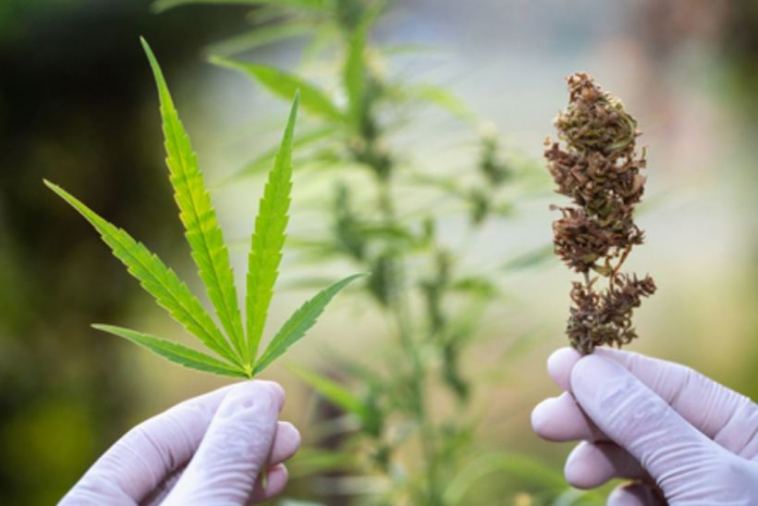- Like
- SHARE
- Digg
- Del
- Tumblr
- VKontakte
- Flattr
- Buffer
- Love This
- Save
- Odnoklassniki
- Meneame
- Blogger
- Amazon
- Yahoo Mail
- Gmail
- AOL
- Newsvine
- HackerNews
- Evernote
- MySpace
- Mail.ru
- Viadeo
- Line
- Comments
- Yummly
- SMS
- Viber
- Telegram
- JOIN
- Skype
- Facebook Messenger
- Kakao
- LiveJournal
- Yammer
- Edgar
- Fintel
- Mix
- Instapaper
- Copy Link
Introduction
Cannabis is undoubtedly one of the most resilient plants on earth. This would explain why a plant originally from South Asia now thrives in nearly any region on the globe.
A common nickname for marijuana is weed because the plant can thrive in the wild on its own, just like regular weed plants.
However, the cultivation of marijuana requires specific conditions despite its remarkable resilience. Knowing these conditions is crucial, especially when it comes to mass production.
Discover how to grow cannabis in a perfect environment with these tips.
1. Make the Right Seed Selection
A grower’s specific needs will determine the best cannabis seeds for them.
Others prefer to wait months for their hybrid weed to mature while others prefer seeds that mature faster. Auto-flowering seeds are the best choice if you would like a fast maturation.
In addition to evaluating your end-goal when selecting cannabis seeds, consider how long the seeds will mature.
Cannabis seeds from Indica strains are generally recommended for those trying to cultivate cannabis for medicinal purposes. Those growing marijuana for recreational use will benefit from sativa seeds. Hybrid seeds offer the best of both worlds, so you need to consider them if you want to get the best of both worlds. Head over at Homegrown Cannabis Co. website and see the varieties of seeds they offer.
2. Take Into Account the Consistency of the Soil
Poor drainage occurs when there is too much clay in the soil. It is possible for your cannabis plants to die if the soil is oversaturated with water when heavy downpours occur.
Additionally, sandy soil drains rapidly, preventing your plants from absorbing sufficient water.
A loamy soil will yield the best results. Growing your plants in soil that contains a lower ratio of clay or sand would be a better alternative. Generally, the ratio should be 40:40:20 for sand, salt, and clay.
3. Maintain the Right pH Levels
Hydrogen power, or pH, is a measurement of a substance’s acidity or basicity. pH scales have values between 0 and 14, so the figures are usually interpreted on that basis.
Strong acids and bases are indicated by values closer to 0 and 14, respectively. Neutrality is represented by 7.
A slightly acidic pH environment is best for cannabis. To optimize soil pH, make sure to keep it between 6.2 and 6.9.
Keep pH-stabilizing reagents on hand at all times so you can stabilize the soil’s pH when needed.
4. Be Sure That You Have Adequate Air Supply
Plants flourish in environments with ample air supply, including cannabis. In some cases, plants produce more oxygen or carbon dioxide than they consume.
The system will need to be robust while they use it continuously. Growers outdoors shouldn’t have any problems with this.
In order to regulate air movement around indoor plants, you may need specialized equipment. This could be accomplished with the help of a fan.
A fan may also drive away some pests that normally thrive in still environments, as well as expelling stale air and replacing it with fresh air.
5. Ensure There is Ample Light Exposure
There must be at least 18 hours of light for marijuana to grow. Those growing outdoors shouldn’t have any issues here either, since the sun and daylight should be plenty.
In this case, timers will control how much light the plants receive no matter where you grow your plants. Your LED grow lights should not be turned on or off by their timer. Instead, the timer should remind you when to turn on or off the artificial light source.
As with indoor germination, you should delay outdoor germination until the cannabis seedling has been exposed to at least 12 hours of daylight per day and at least 8 hours of direct sunlight every day.
6. Maintain Ideal Growing Temperature Range
The principle that plants die in extreme temperatures isn’t something you need to learn in agriculture classes. In this case, ‘extreme’ refers to both ends of the spectrum.
Therefore, it is your responsibility to make sure your plants remain within the ideal growing temperature range regardless of the local temperatures.
It’s now common for cannabis plants to thrive when the temperature stays between 27 and 28 degrees Celsius. Utilizing fans, cooling or heating mats, or air conditioning units, you can create the ideal climate for indoor plants.
If you plan to grow outdoors, you’ll need to study your climate carefully so that your plantings and harvesting are effective.
7. Choose the Ideal Plant Strain
Different species of cannabis make up the cannabis genus. Cultivars and strains are also sometimes called these species. There are many varieties of Cannabis, including Cannabis sativa, Cannabis indica, Cannabis ruderalis, and Cannabis hybrids.
Choosing the right cannabis strain will be easy if you understand the different strains of cannabis.
You should look for cannabis plants that are weed- and drought-resistant, matured during the growing period, and yield high. Learn about the plant’s dominant cannabinoids as well.
Sativa species, for instance, produce marijuana strains, whereas Indica species produce hemp strains. Cannabidiol (CBD) is the primary non psychoactive compound in cannabis, and hemp cultivars are known for yielding higher levels than other cannabis species. Cannabis cultivars tend to yield a higher level of the psychoactive compound tetrahydrocannabinol (THC). Check out https://homegrowncannabisco.com/cannabis-seeds-rooms/high-thc-seeds.
The Takeaway
Cannabis is unquestionably a plant that is highly resilient. Furthermore, growers can leverage that resilience by cultivating their plants under ideal conditions by following the recommendations above.
